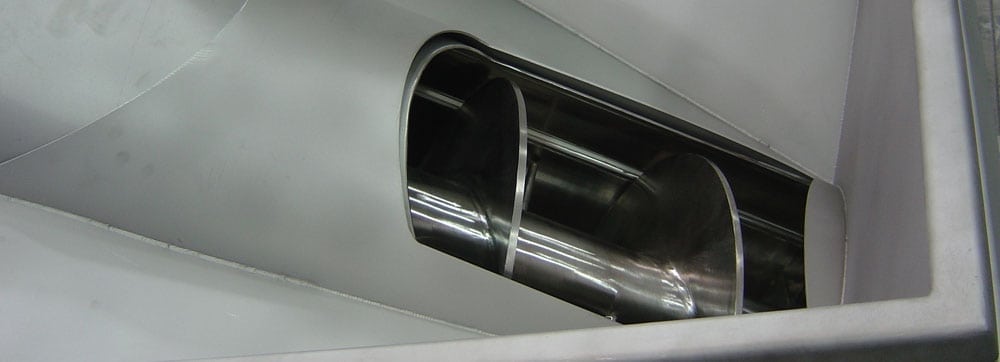Auger conveyors are a key component in most processing operations. These pieces of equipment are able to convey bulk materials — everything from large chunks of product down to sub-micron powders — efficiently and effectively, while offering versatility in set up and operating layout. The uses are practically endless across the food processing industry, making them indispensable to an efficient processing operation.
However, auger conveyors, like any food processing equipment, can pose a safety hazard to your employees if not used properly.
Removing guards, not paying attention to safety warnings, trying to duck under or cross over the conveyor, starting the equipment too soon, forgetting to lock castors in place, even overloading the conveyor can quickly cause severe employee injury or even death.
Most Common Risks
The greatest safety risks with using auger conveyors are:
- Crushed Fingers or Limbs: incorrectly loading the auger hopper or removing safety guarding without following proper lock-out / tag-out procedures can result in limbs being caught up in the auger screw.
- Head Injuries: improper guarding, ducking under the auger, and not paying attention to where one is walking can result in severe head injury.
- Overexertion: failure to follow proper technique in moving a portable auger can lead to overexertion — a risk factor for musculoskeletal disorders.
Follow These Tips for Safely Operating an Auger Conveyor
[clickToTweet tweet=”Follow these six safety tips to reduce the risk of injury when operating an auger conveyor.” quote=”Follow these six safety tips to reduce the risk of injury when operating an auger conveyor.” theme=”style6″]
Follow Lock-Out / Tag-Out Procedures
Whenever the safety guards need to be removed from the auger conveyor, or any maintenance performed, proper lock-out / tag-out procedures should be followed. This will protect employees from accidental equipment start up and getting caught in the moving parts of the auger.
Make Sure Guards, Shields, and Access Doors are Locked in Place
Before starting up an auger conveyor, employees should check to make sure all guards, shields, and access doors are locked in place. This will keep moving components from being exposed and product from spilling out.
Use Marked Walkways
Auger conveyors generally incline, giving the illusion that there is space to walk underneath. When moving throughout the facility, employees should stick to marked walkways and avoid walking under equipment. Never try to cross over an auger, except on crossovers and catwalks.
Alert Personnel of Equipment Starting
Never start an auger conveyor until all personnel in the area are alerted by a signal or by a designated person that the conveyor is about to start. This will help prevent accidental injury from employees who did not know the equipment was starting.
Pay Attention to Alerts and Warnings
Always pay attention to any alerts, warning signals, or safety signs. They are there to warn you that you are entering a potentially unsafe zone. Be alert and clear any specified areas.
Follow All Manufacturer Suggestions
The manufacturer of your auger conveyor most likely provided you with tips on how to operate their equipment. Following those suggestions and refraining from making changes to the equipment, will help keep your employees safe. Those suggestions are there for a reason. Don’t ignore them.
Reduce the Risk
Following the six tips above will greatly reduce the risk of employee injury when it comes to using auger conveyors throughout your processing plant.
Auger conveyors might not seem dangerous, but improper use puts your employees at risk of injury. Print these tips out, give them to your employees, and train them how to properly operate auger conveyors. It will save you the time and money involved in settling an employee injury.



